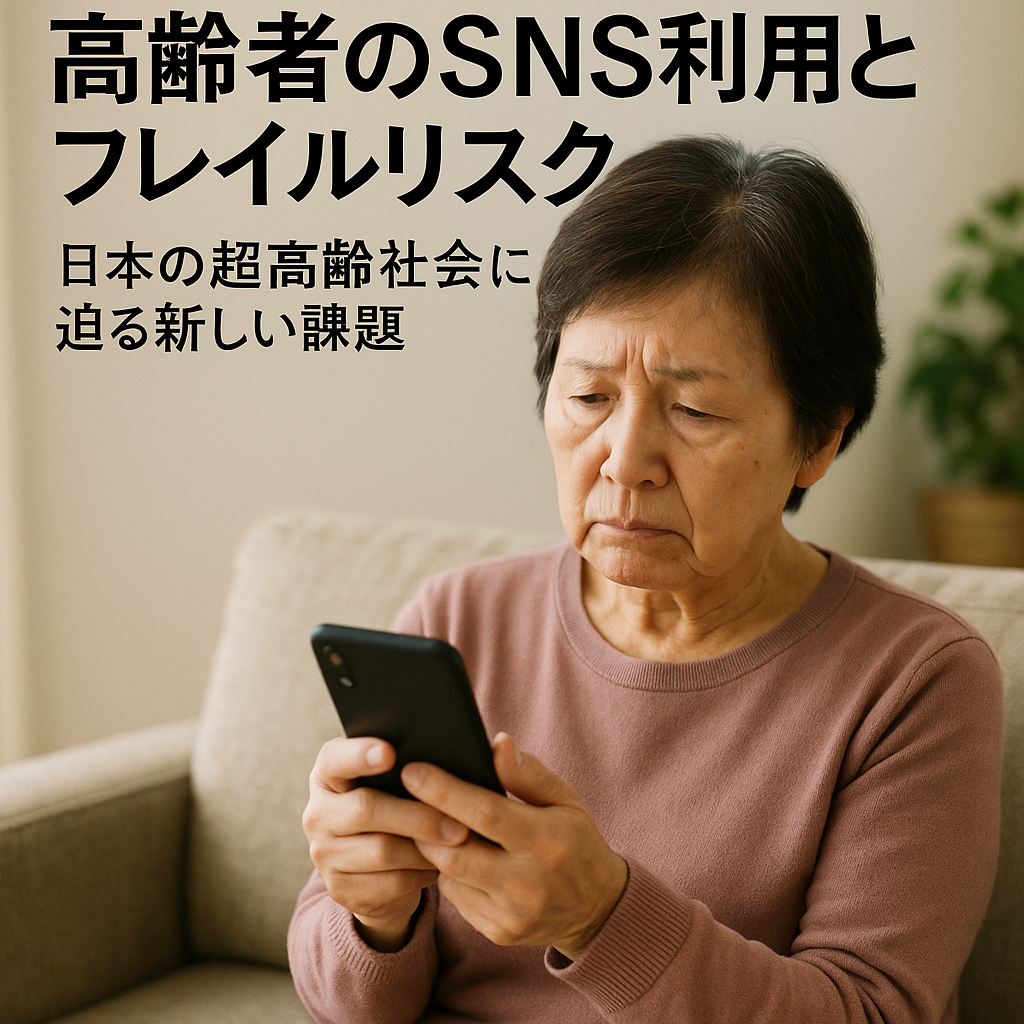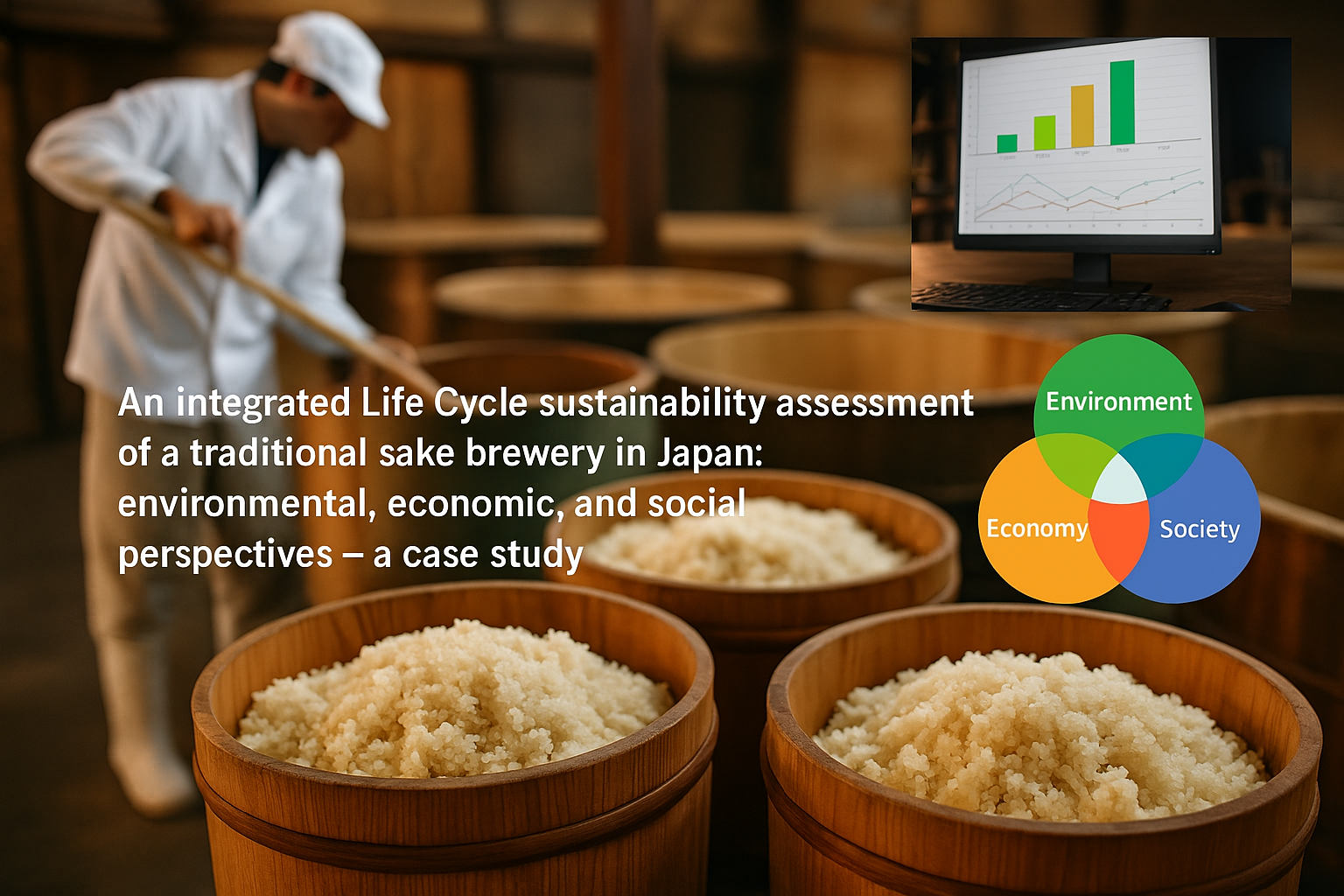日本は世界でも最先端の超高齢社会であり、フレイル(虚弱)の予防は喫緊の公衆衛生課題である。近年、高齢者のソーシャルメディア利用は確実に広がっているが、その健康への影響は単純に「積極的か受動的か」という二分法では捉えきれない。利用の仕方や動機がどのように心身の状態に影響するのか、これまで十分に検証されてこなかった。
今回の研究では、日本に住む65歳以上の地域高齢者950人を対象にオンライン調査を実施した。フレイル評価には厚生労働省の基本チェックリストを用い、ソーシャルメディアの使い方を八つの行動指標に基づいて分類した。その上で、心理社会的特徴との関係を分析し、さらにフレイルとの関連を多変量解析で検討した。
結果として、三つの利用者像が浮かび上がった。「バランス型・現実志向のコミュニケーター」、「低関与・受動的ユーザー」、そして「積極的・多目的ユーザー」である。その中で最も孤独感と不幸感を訴えたのは意外にも「低関与・受動的ユーザー」であった。現実社会での交流は盛んなのに、SNS上では受け身的にとどまっている人々である。
さらに分析を進めると、「自分の活動を記録するためにSNSを使う」という行動が独立してフレイルリスクを高めることが判明した。いわば「自己記録型」の利用が危うさを孕んでいるのである。一方で、運動への自信(自己効力感)、睡眠の満足度、対面でのコミュニケーションの満足度といった要因は、フレイルを防ぐ強力な保護因子であることが確認された。
この研究は、ソーシャルメディア利用そのものが高齢者の健康を左右するのではなく、どのように使うか、何のために使うかといった「質」の側面が決定的に重要であることを示している。自己記録に偏った使い方は心身の脆弱性を反映する危険信号となりうる一方で、身体活動や睡眠、直接の人間関係がフレイル予防に寄与することを裏づけた。
高齢者のデジタル社会参加が当たり前になりつつある今、求められるのは単なる利用促進ではなく、利用の質を高めるデジタルリテラシー教育である。SNSを「つながり」と「幸福感」を育む道具に変えていけるかどうかが、健康長寿社会の行方を左右するであろう。
Background
In Japan’s super-aged society, frailty prevention is a critical public health issue. While social media use is increasing among older adults, its impact on well-being is complex and not fully understood beyond a simple active-passive dichotomy. This study aims to explore the relationship between specific social media usage patterns, users’ psychosocial backgrounds, and frailty risk.
Methods
We conducted a cross-sectional online survey of 950 community-dwelling older adults in Japan. Frailty was assessed using the Kihon Checklist. A two-stage analysis was performed: 1) K-means cluster analysis was used to classify participants based on eight SOCIAL MEDIA use behavior variables, followed by a Kruskal-Wallis test to compare psychosocial characteristics across clusters; 2) Ordinal logistic regression analysis was used to identify specific behaviors associated with frailty after adjusting for covariates.
Results
Three distinct user clusters were identified: “Balanced, reality-oriented communicators” (n = 333), “Low-engagement, passive users” (n = 419), and “Active, multi-purpose users” (n = 198). The “Low-engagement” group reported the highest levels of loneliness and unhappiness, despite high real-world social participation. Regression analysis revealed that the specific behavior of “using social media to keep a record of my own activities” (self-documentation) was independently associated with an increased risk of frailty (β = 0.105, p < .05). Conversely, high exercise self-efficacy (p < .001), sleep satisfaction (p < .01), and satisfaction with face-to-face communication (p < .001) were protective factors.
Conclusion
Social media usage patterns reflect underlying psychosocial states, but are not direct predictors of frailty. The motivation-driven behavior of self-documentation, rather than general activity, is a risk factor. These findings suggest that interventions should focus on the quality and function of social media use, promoting digital literacy that enhances well-being in older adults.
雑誌名
The Journal of Frailty & Aging
発表タイトル
A two-stage analysis of social media use patterns, psychosocial well-being, and frailty in an aging Japan
著者名
Yuki Nakada, Yuna Seo
引用
Nakada, Y., Seo, Y. (2025). A two-stage analysis of social media use patterns, psychosocial well-being, and frailty in an aging Japan, The Journal of Frailty & Aging, 14, 6, 100091. https://doi.org/10.1016/j.tjfa.2025.100091


